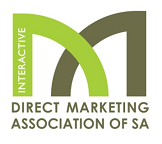Although the question of branding has always been essential part of marketing and has been approached with multi-dimension models, sometimes these studies have been made without systematic approach or with full of redundancy or ad-hoc views. Unlike marketing which has the widely-known and usable, practical 7P-model, branding still misses such a sort of basic structure which makes the skeleton of all branding story.
Here I am making an outline of such a simplified model to help people in successfully designing brands and also to better understanding the already existing ones. I collected 7 layers of the branding with 7 different tasks to be completed in everyday actions. I hope this can be useful for the readers, too.
Right before entering this syllabus, we need to define what brand and branding is: in our view brand is a vision that is related to a specific company, product or any specific entity which lives in people and materializes to them. Branding is the art of deliberate control over the whole process.
First pillar: Publicly known
A brand always defines a smaller or bigger group of people who are somehow aware of the product or the service in question. This is the prerequisite or trivial condition of all brands: if you are the only one who knows a specific service or uses a specific product and no information is publicized, the service or product is unable to evolve into a brand. This is the primary task of all marketing efforts, making our specific product or service (along with its whole branding costume) widely known on the addressed market: the majority of the marketing budget is used for this purpose. At this point we normally pay attention to the details of the publicity of all brands: target segment(s), its content, geographic, demography, media, communication methods, timing etc.
Task 1: design and make your publicity
However, the fame of a product or service is not exclusively based on the publicity gained (mostly depending on the money available for promoting the brand) via frontal, push-type of promotion. Money spent on communications is a very important factor to reach the second stage of publicity: the people involved in the communications flow will probably share the information with each other and start a - sometimes very simple and few words - discussion about the product or service heard. The act of sharing the information with each other happens or has happened with all known brands. Suggestions, opinions made in public are very important in articulating brand and thus creating or strengthening/weakening brands. This is why the importance of Facebook in contemporary marketing cannot be overestimated enough, or, with similar effect, the customer service/problem handling has always been focal point of customer satisfaction and branding, too.
The publicity of branding therefore incorporates all means of sharing the information related to a specific brand or service. There are two basic type of publicities: there is of course the strictly controlled information sharing method (typically: marketing communications) and we also have to face a second publicity, the huge uncontrolled means of communication. When we are thinking on designing a new brand or just examining an existing one, we have to enlist all the ways how the specific brand gains publicity and sort them by relevance with regards to the public coverage and effect, making special attention to the uncontrolled ways of publicity.
The success of controlling publicity is a key to profit from branding, however, public control will never mean information monopoly over the media and over the outcome: even situations when a company has theoretically 100% control over the situation (e.g. customer care desk at the office or shop), it is always a challenge to control what is exactly happening there, what is going to be told or heard. Thus, from micro to macro level the publicity always carries a huge uncertainty factor with regards to reach, direct effect and future implications.
Second pillar: Associative and narrative - stories around
The discussions initiated and information shared publicly about a brand (or a branded product or service) would show up the next major characteristic of brands, that is, the power of the coupling or association related to the branded products or services. In other words, branding means that we create stories around a brand. Brand identity or personality, brand vision, brand promise are the official stories reflecting the narrative of a generic brand on different levels. Marketing creative planning is exactly doing the same around a specific product of a brand (e.g. 'The environment friendly Toyota Prius' as a story), while general brand stories (I mean the Toyota brand in the example) or associations are on higher level only. We therefore have to consider several layers of brand stories or narratives when examining them. It is very useful when these stories are consistent and formed professionally and are not contradicting to each other.
Brands are incorporating many stories and ideas not just from individual products and services determined by the company but stories and ideas also coming from the public. Unfortunately - as we mentioned above - we cannot control the majority of the perceptions of our brand. Individual opinions, perceived qualities, good or bad experiences are building the narrative universe, or more simply, the stories of a brand.
Task 2: define and drive brand stories
Notwithstanding the above, we can drive these brand stories and narrow them to the desired ones on at least two-three different areas. The mission statement of a company/organization is the very source of official brand stories and determines the branding direction via its written values and operational reasons. Secondly, the slogan or the tagline of a brand (like LG's Life's Good) is meant to embody the driving narrative story and works like a magnet: collects all the associations around a brand. The third layer of story comes along with specific products or services: repeating the slogans, taglines while inserting the logo of the brand on individual products/services makes the specific product or service painted with the general brand's associations and qualities. The individual story of a product or service is like a topping on the branding cake. Pure brand campaigns on the other hand are always aiming outlining and fixing the desired main stories and narratives of qualities in the customers.
Controlling publicity cannot be done without controlling the stories attached to a specific brand and seems the major task of all branding and communications managers. Here, we have to highlight a related issue which behaves like the blind spot of the branding: rebranding. Rebranding campaigns are to change the very basic story of a brand. This is the reason why these campaigns fail many times and real rebranding is a very seldom event.
Third pillar: Concrete and multiplicative form
In real life we always give tangible forms to brands because we want to make profit from our money spent. Brand without concrete product/service to buy (or without a related person when we talk about personal brands) is useless or just a promise (like the newly planned Jolla mobile OS with only a demo video). The embodiment of a Brand is an essential part of its very nature.
Normally we use the power of a general Brand Name for many individual products. An already existing brand hands over its potentials (its stories of qualities, usage, value etc.) to specific, individual products and even when we see a new product of an already known brand we are already having a presupposition or sense of certain expectations towards the brand new product. A VW car is perceived for many as a reliable one; however, it may happen that a much lower quality is introduced in a new model than what the brand had fulfilled at its predecessors.
Task 3: make several appearances to utilize brand power
Most times we may say that a brand is transferred into several products and therefore it is multiplicative. It is very seldom that an earned reputation of a brand represented in only one product or service. For example the perfume 4711 seems to be transferred only into one product for a long time, but the brand's product portfolio today consists of more than one item: after shave or even shower gel is also produced. Start-ups typically own only one product and normally the first product is the one that determines and forms the brand later on. Initially, the brand is typically built upon on only one product or service and this is why it is very sensitive when entering a market with a new company and a new product: it also determines the future brand and products the company assessed with.
Personal brands, seen superficially, are not multiplicative: a person who has double face (see politicians) and therefore not able to form a consistent and concrete personal brand, are subject to lose their reputation and their face rapidly. This is because brands can have only one concrete (credible) story, without major contradictions. The multiplicative nature of personal brands should be investigated from another perspective. In case we regard a person's appearances in public as concretizations and multiplications of his/her brand, we are closer to the truth and we understand better why celebrities and politicians are so keen on public appearances.
Fourth pillar: Unique proposition
The history of branding is stemming from the wish of making a producer's goods identifiable. This is not just to ensure the identity of goods but also to prevent from copying and forgery. The brands around us are still carrying these old attributes: the logo of the company/brand is expressing the uniqueness of a brand (supported by law as trade marks) and helps us to identify a specific brand in the universe of brands and signs.
Sometimes it is very hard to make distinction based on the products/services alone: Pepsi and its rivals put in a neutral glass next to each other are unidentifiable, so the use of branding techniques is crucial for gaining profit for both companies. Just like in the cola case, the technological industry also heavily relies on the branding when selling its products or services: PCs, laptops, smart phones or internet accesses are very similar to each other. Or, a tax advisory service consultant firm is facing real challenges to provide specific brand vision.
Task 4: find and use the means of brand differentiations
The unique proposition of the brands has to be built up and shown for the public: the individual logos of brands on devices for example help the company to make distinction from their competitors and help the customers to identify different market players in order to make a personal choice of preference. Most times companies heavily rely on the unique brand distinguishers, like stories about their unique market segment, tailor-made products, additional services they provide etc. Sometimes, when stories among a group of competitors are very similar or compatible (like the Big Four Auditors) and even their service is similar, a common story may evolve around them focusing on more the similarity and indirectly expressing the exclusivity of the group members.
Fifth pillar: Value
When we identify a brand on its telltale signs (e.g. design) or logo we do not think on what we see first (the product itself) but rather we focus on the brand value represented by the specific product or service. We may say (even without seeing the product) that if you are having Martin Logan stereo speakers that is very cool, but if you are having Philips that is not so awesome. Different brands represent different values: there are low-end and high-end brands with many in between. Start-up companies have to position their brand value on the axis predetermined by the existing market players. Making decision on positioning the companies' services or products on the lower or higher end of this axis has nothing to do with ethical values: a low-end, cheap car helps many disabled or poor people without doubt. Rather, making the choice of brand values determine the market we are about to target. And this target market decision affects our business outlooks directly. When Toyota launched it Lexus series and decided to focus on the higher end cars they probably considered the higher profit option.
The value of a brand is also expressed in a more measurable way. In general ledgers brands are valued as a part of the company's goodwill and are very sensitive for new product introductions and for amortization, too. From financial point of view brands regarded as assets that have been created due to investment and are also subject to lose or increase their values.
Task 5: define and carry brand values
The value of a brand emanates into individual products of a company and the value of the sold products affects the value of the brands. More surprisingly, the value of a brand may transfer over the buyer persona influencing the perceived value of a person in a certain group of people (see Apple fan-effect) while the network-effect of the public also modifies the brand value (exclusivity, limited models are also able to increase brand value).
The relative price of a product or the whole branded portfolio both has very special connection with the brand value: the higher the price positioned the harder to imagine low brand value. This is because the narrative of the price (see Second pillar) influences the brand value. Other narratives of a brand (how durable it is, for instance, or which celebrities are using this brand) heavily effect the brand value, too. Similarly, the extent of public spread (see First pillar - how much the brand is known, how much spent on advertising) also effects the brand value.
Brand value is determined by several other factors even not listed here. It is partly the result of deliberate actions of the company (market positioning of the brand and its products) but also exposed to external factors (like time) and public opinion.( LG's rebranding from the low-end Goldstar brand to the higher positioned LG showed that value propositions of a brand require efforts in both areas. Grundig made the opposite U-turn when sold to Chinese company.)
Sixth pillar: personal relation
All the pillars encountered previously are summoning on personal level because the nature and the definition of branding 100% relates to human feelings and perceptions. Most cases we can translate this personal effect and feelings to perceived brand values and the position of a brand in the customers' head. People know or do not know, like or dislike brands, become haters or fans of brands, recommend or just accept certain brands.
Task 6: turn personal relation to action
As a result, this personal disposition of a brand clearly ends up in the relation to the act of buying. We, marketing professionals should not deny the aboriginal intention of our branding efforts to influence buying decisions on personal level. We are not just simply influencing people in business for the sake of general human aims: we do not want world peace; we do want to have our specific products and services sold. We want to convince John or Clair Smith as individual customers to select our service or product. This is the action we - or more generally: the investors - expect from any investments (including brand campaigns) made.
Fortunately we not all live in the business sector, not all follow business aims (i.e. sales) in our lives. Surprisingly, non-profit organizations are not so much different from business ventures from this point of view. Non-profits also want to have a specific action to be reached: an action that is maybe appearing directly (like giving donation for starving people) but can be mental action or change to be targeted (for instance diversity campaigns).
The personal relation to a branded entity can be outlined in a matrix where on the first axis we can define the readiness or probability of buying action (or in a non-profit: readiness for action) and on the second axis we may highlight the level of brand's emotional acceptance.
The personal relation to a specific brand with regards to the ultimate sales reason can be mapped as shown, but we should not forget that personal emotions and relations to brands are much wider than presented above: some people feel that their beloved brand is expressing also their way of life, involving several other actions well beyond a simple shopping; or just feeling neutral about a brand while the person is not going to be represented in any commercial situation (like myself with any hunting brands, although I know some of them).
We should therefore identify very precisely the personal relations to our brand of our existing and potential customers and we should make focused actions to harvest the branding efforts we have previously made.
Seventh pillar: Exposure to time
We have already mentioned before the amortization as an important factor in brand values. The simple reason of amortization is that the brands (via materialized products/services) and the customers live in time.
The general life exposure to time factor represented in concrete shapes with regards to brand itself and to its specific products/services. (Amortization is only the result of that process.) Brand perception very much effected by the products/services in timeline (e.g. how much up-to-date the product is reflects the brand's state-of-the-art nature) and on the other hand the brand itself (without looking at individual products) also has an individual character which has its own life-cycle (how old a brand is, what type of products they represent).
Task 7: Consider time: plan and replan over time
Brands do not last for ever and are changing over time, even without deliberate actions. Amortization expresses the time-factor in economic terms but all the pillars mentioned before has a time layer. The repeated actions of marketing campaigns, the product developments or changes in market environments change the face of the brand even if it is not perceived by the company. The sad story of Nokia is a perfect example of how this specific brand was effected by the time factor in all possible way, from the publicity of its phones (a complete new generation has skipped Nokia phones), through the changes in the narratives attached to the brand, with the refreshed need to be unique again to the sharp decline of the brand value.





























